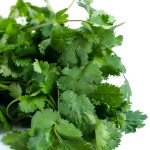I was reading the Wall Street Journal a few days ago and found an article with the jolting title "Pesticide Residue Taints Apples." The US Department of Agriculture (USDA) tests a variety of foods for pesticides and this year 98% of the apples they screened tested positive. Most of us eat apples; they are the second-most widely consumed fruit in this country (bananas are first).
I next found the USDA website and information on their testing program. It's been going on yearly since 1991, tests over 85 "commodities" including foods that may be fresh, canned or frozen, poultry, beef and catfish. They also test water (bottled, private and school wells, municipal water sources). The Pesticide Data Program (PDP) tests for more than 450 distinct pesticides of a variety of types (herbicides, fungicides, growth regulators, insecticides). The most recent PDP statement I could find (2009) said samples were obtained from 11 states representing ~50% of US population and all regions of the country and analyzed in thirteen central laboratories.
This year samples were washed under cold water for ten seconds to emulate typical consumer actions and yet over 90% of those from grapes, strawberries, cilantro, potatoes, oranges and spinach (plus apples of course) had pesticide residue. Cilantro was tested for the first time and the data was frightening; 44% of cilantro samples not only positive tested for pesticides, but also for unapproved pesticides.
According to a number of online sources, we have in recent years shipped to other countries huge amounts of pesticides that are not allowed to be used in the US. Then, of course, we may import foods from those countries. The good news, limited as it was, came from the USDA; only 3% of 2009 samples from produce, beef and rice contained either unapproved pesticides or excess amounts of pesticides.
The US Apple Association, burned by a "60 Minutes" program in 1989 which linked the pesticide Alar to health risks, has long complained about the Environmental Working Group's Dirty Dozen & Clean Fifteen lists. Yet the EWG's 2011 Shopper's Guide (I'll paste in the URL below), says if consumers chose from the good list they can reduce their daily pesticide intake by more than 90%.
So if you can, choose from the "Clean Fifteen" and otherwise buy organic; if not shop wisely and that's especially true for those of you who are purchasing food for youngsters. An EPA senior staffer, Devon Payne-Sturgis,PhD, Assistant Director of the National Center for Environmental Research, authored a prize-winning 2009 publication showing 40% of US children have levels of one type of pesticide well above what is considered to be the safe limit.
I'm going to see if we can buy organic cilantro and in another hour or so I'll go pick up our first shipment of this year's CSA veggies.
http://www.ewg.org/release/ewgs-2011-shoppers-guide-helps-cut-consumer-pesticide-exposure


